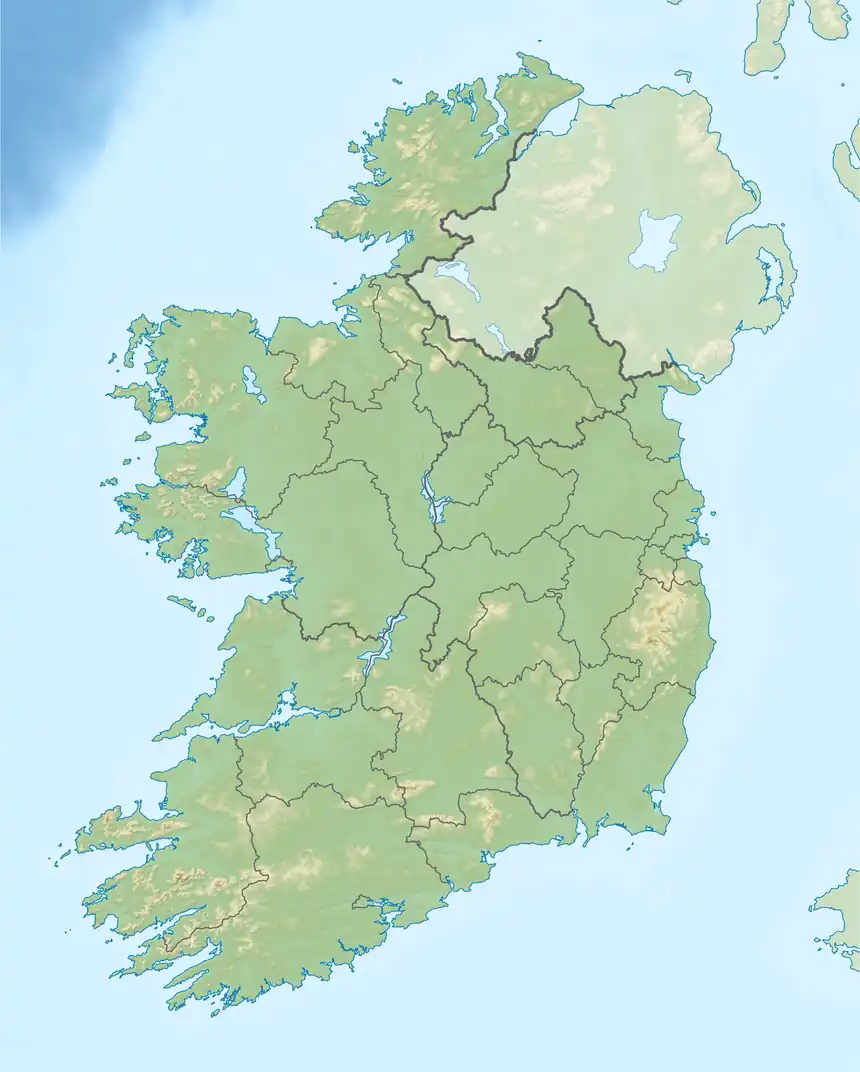| Kilfane Church | |
|---|---|
| Cell-Phaain[1] | |
Cill Pháin | |
 | |
 Kilfane Church | |
| 52°33′15″N 7°07′06″W / 52.554167°N 7.118333°W | |
| Location | Kilfane Demesne, Kilfane, County Kilkenny |
| Country | Ireland |
| Denomination | Church of Ireland |
| Previous denomination | Pre-Reformation Catholic |
| History | |
| Founder(s) | Cantwell family |
| Architecture | |
| Functional status | inactive |
| Heritage designation | |
| Official name | Kilfane Church |
| Reference no. | 300 |
| Style | Late Gothic |
| Years built | 13th century |
| Specifications | |
| Length | 22 m (72 ft) |
| Width | 7 m (23 ft) |
| Materials | stone |
| Administration | |
| Diocese | Ossory |
Kilfane Church is a medieval church and National Monument in County Kilkenny, Ireland.[2]
Location
Kilfane Church is located 3.4 km (2.1 mi) north-northeast of Thomastown.[3]
History

The area is supposed to derive its name from a Saint Phian.
The church was built in the 13th century. The Cantwells were Lords of Kilfane and adjoining areas from shortly after the Norman conquest to the confiscations following the Confederation.[4]
Poet Deirdre Brennan wrote a poem about Kilfane Church in 2001.[5]
Church

Kilfane Church is a long rectangle with sedilia, altar, book rest and piscina. The sedilia are believed to come from an older church and still have some medieval paint. Three original doorways in the north and south walls are headed by ogee stones.
The castellated tower house at the east end may have housed the presbytery/sacristy and provided residents in the upper storeys.[6]
When the new Church of Ireland building was built across the road, the old church found new use as a church.[7]
The main feature is the Cantwell Fada, an effigy of a knight from the 1320s/30s;[8] this would have been intended to lie horizontally as a cover to his tomb, but is now set vertically [9][10] and protected by a transparent cover. When the church was used as a school, misbehaving children were made to kiss the effigy. Later, it had been covered by soil to protect it until 1840, when James Graves uncovered and cleaned it.[7]
Four casts were made;[7] one of them is on display in the National Museum in Dublin.
References
- ↑ "Foundation: Cell Phaáin". Database of the Monasticon Hibernicum Project. Dublin Institute for Advanced Studies. Retrieved 26 July 2022.
- ↑ Hourihane, Colum (6 December 2012). The Grove Encyclopedia of Medieval Art and Architecture. OUP USA. ISBN 9780195395365 – via Google Books.
- ↑ "Journal of the Royal Society of Antiquaries of Ireland". The Society. 1 January 1855 – via Google Books.
- ↑ "Kilfane Church - Attractions - Museums and Attractions - All Ireland - Republic of Ireland - Kilkenny - Thomastown - Discover Ireland".
- ↑ Brennan, Deirdre (1 January 2001). The Hen Party. Lapwing Publications. ISBN 9781898472551 – via Google Books.
- ↑ Hegarty, Maureen (1974). "Kilfane". Old Kilkenny Review: 8.
- 1 2 3 Graves, James (1852). "On the Cross-Legged Effigies of the County of Kilkenny". Transactions of the Kilkenny Archaeological Society. 2 (1): 63–70. JSTOR 25489812. Retrieved 20 June 2021.
- ↑ "Kilfane Church".
- ↑ Jackman, Neil (12 June 2015). "The best medieval statue in Ireland is 8ft tall and in a ruined church in Kilkenny…". TheJournal.ie. Retrieved 12 October 2020.
- ↑ "Kilfane Church, Kilkenny".